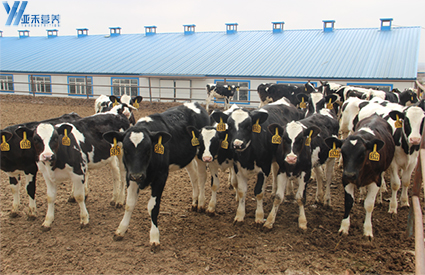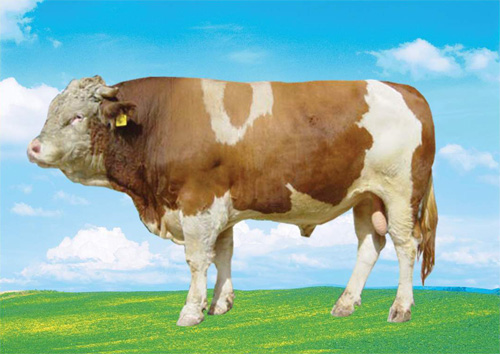At present, the quality of China's dairy industry has continuously reached a new level, and more and more consumers' confidence in the Chinese dairy industry has gradually recovered and is increasing. However, China's dairy industry still faces many challenges, including seasonal fluctuations in raw milk, complex supervision, and continued pressure on imports. How to promote the revitalization of the dairy industry? This magazine will launch a series of reports, so stay tuned.
After years of development, China's dairy industry has fought a turnaround, with various types of dairy products, and the quality of the dairy industry has continuously reached a new level. However, the price of raw milk has been sluggish for a long time, the interest linkage mechanism between dairy farmers and dairy companies is still not strong, and the pressure on dairy products to import is still plagued the development of the dairy industry.
Recently, the General Office of the State Council issued the "Opinions on Promoting the Revitalization of the Milk Industry and Guaranteeing the Quality and Safety of Milk", proposing that by 2020, significant progress will be made in the modernization of the milk industry. The dairy industry is the pillar industry of the first, second, and third industries in rural areas. Breeding is also the source of the dairy industry. The reporter conducted an interview on how the dairy farming industry can achieve industrial revitalization.
China's dairy industry moves towards large-scale standardization
The insulated drinking water tank can keep the water temperature constant, solve the problems of freezing water in winter in the north, and excessively high water temperature in the summer in the south; set a floating ball at the diversion port to usually block debris and other debris. The large fan is equipped with an automatic sprayer, which regularly sprays water to cool the cows against heatstroke ... At the 2018 China Dairy Exhibition held recently, all kinds of new breeding equipment were unveiled, and many breeding enterprises actively approached.
Raising cows is necessary to produce good milk, and building a high-quality milk source base is crucial to the revitalization of the dairy industry. Nowadays, many domestic large-scale farms and cooperatives favor advanced breeding equipment, and the farming technology and management level of dairy farms have been continuously improved to achieve more thoughtful care for dairy cows. Many powerful pastures have built their own alfalfa planting base, which can not only guarantee the supply of high-quality raw materials, but also greatly reduce the cost of feed.
In order to ensure the health of dairy cows, Yili Group has implemented a coordinated quality control system, which has achieved full coverage of dairy cattle eating, housing and transportation, and has also established a comprehensive testing system, investing nearly 100 million yuan in inspection costs every year. Over 30 items of nutritional indicators, toxins, pesticide residues, prohibited additives, heavy metals, etc. are monitored for feed products; about 40 items of quality testing items are used for cleaning fluids, medicinal bath liquids, paper towels, rubber parts, etc. used in pastures.
Gao Hongbin, Honorary President of the China Dairy Industry Association, said that at present, China's milk source construction has achieved remarkable results, and dairy breeds, feed nutrition, disease prevention and control have reached or approached world-class levels. Modern pastures have the ability to adopt advanced breeding equipment, optimize the structure of dairy cows, and strengthen self-regulation, which is conducive to ensuring the quality and safety of raw milk at the source. In 2017, the passing rate of raw milk sampling inspection reached 99.8%, and the main quality indicators were higher than the national standard of raw milk.
Establish a connection mechanism for aquaculture processing benefits
In an interview, the Economic Daily reporter learned that dairy products processing companies have absolute say in the purchase of raw milk, and farmers are usually kept in a state of survival or low profit, resulting in farmers ’vulnerability and sensitivity to market fluctuations, regardless of The milk shortage is still leftover, and the risks and losses of market fluctuations are mainly borne by farmers. The data shows that during the slump in the dairy industry from February 2014 to September 2015, the price of raw milk fell by 19.7% and the price of fresh milk increased by 5.6%. Farmers withdrew from the market while the profits of processing companies increased substantially. From the end of 2017 to the beginning of the year, the price of raw milk decreased by 0.8% and the price of fresh milk increased by 1.6%. The weak position in the breeding sector restricts the consolidation and development of the breeding base and cannot provide support for the overall revitalization of the dairy industry.
"Cultivation and processing are like two rounds of vehicles. They are indispensable. It is very important to establish a solid mechanism of interest." Wang Feng, deputy director of the animal husbandry department of the Ministry of Agriculture and Rural Affairs, said that it is necessary to build a mechanism to promote integration and seek a win-win situation. The benefits of breeding and processing are linked. Cultivate and strengthen professional cooperative organizations for dairy farmers to enhance the ability of the breeding sector to respond to market risks. Dairy companies are encouraged to strengthen the construction of milk source bases through self-construction, acquisition, shareholding, trusteeship, etc. and increase the proportion of their own milk sources. To guide the milk producers to establish a raw milk price coordination mechanism and carry out a third-party testing pilot. The agricultural department will investigate and punish non-fulfillment of raw milk purchase and sale contracts and other acts in accordance with law.
Liu Changquan, director of the Industrial Economics Office of the Rural Institute of the Chinese Academy of Social Sciences, suggested that we should speed up the improvement of the dairy industry's interest linkage mechanism with the protection of the interests of dairy farmers. First, we must establish a raw milk price formation mechanism that is conducive to protecting the interests of farmers and industrial development. By strengthening the construction of dairy farmers' organizations, reducing the amplifying effect of disordered competition and excessive competition on market fluctuations, and improving the overall bargaining power of dairy farmers by establishing a collective bargaining system, so that dairy farmers can share the value-added gains in the process of industrial development. Secondly, it is necessary to implement differential pricing of raw milk according to quality, to guide and encourage dairy farmers to improve the quality of raw milk. The differential pricing policy implemented by some regions and enterprises in the country is to distinguish pastures from breeding farms and accelerate the withdrawal of farmers in the community, but its role in guiding farmers to improve the quality of raw milk is not prominent.
"The way to expand the voice of dairy farmers and implement differential pricing is to establish a third-party testing system for raw milk quality to ensure farmers' equal rights to trade." Zhang Shuyi, a researcher at the National Animal Husbandry Station, said that the third-party testing system for raw milk quality is common in developed countries This approach can not only improve the transparency of the quality inspection results, but also avoid the tendency of abuse of the quality inspection rights when the negotiation rights are not equal. At the same time, it is also the basis for price evaluation based on quality, high quality and excellent price.
In recent years, Shanghai, Heilongjiang, Hebei, and other provinces and cities have implemented a raw milk price coordination system. Government departments, farms, dairy companies, and industry associations regularly discuss the raw milk purchase reference price according to changes in farming costs, and gradually establish fair Orderly market order.
Sustained development must break through three barriers
"After 10 years of hard work, China's dairy industry has basically achieved two changes, namely, from total expansion to quality improvement development model, from traditional industry to modern industry." Gao Hongbin believes, "It is necessary to fully affirm efforts and progress, but also We must see the shortcomings and gaps. We still have a big gap with the dairy countries in terms of technological innovation, R & D, and popularization of standardized technologies. " The reporter found that in addition to the technical gap, the challenges facing China's dairy industry in the aquaculture sector are still not small. There are problems with the capital investment of raw milk prices, there are problems with the breeding land for environmental protection policies, and there are problems with the appropriate scale of breeding. .
First of all, it is a financial problem. “China ’s dairy industry has achieved amazing changes over the past 10 years, from free-range stocking to accelerated standardization. In 10 years, in some pioneering areas, the dairy industry has completed the three-level jump of individual households entering the community, transferring the community to the pasture, and upgrading the pasture. After decades of development in developed countries, "said Wang Yuting, a researcher at the Agricultural Information Institute of the Chinese Academy of Agricultural Sciences, it is conservatively estimated that for a community to complete the transformation of pastureland, each cow needs to invest an additional 10,000 yuan. Today, the breeding industry is already a capital-intensive industry, without the help of external forces. According to the current benefits of dairy farming, it is difficult for dairy farmers to support such a transformation.
Followed by land issues. Liu Yuman, an industry economic post scientist at the National Dairy Industry Technology System, said that in the past it was "the one who gets the milk source gets the world", and in the future it will be "the one who gets the land gets the world." An important factor for the rapid growth of the dairy industry in the past was that land factors did not constitute a hard constraint on the development of dairy farming. Now, in the context of stricter environmental protection policies, land supply will become the main bottleneck for the development of the dairy industry. The current "seed-breeding separation" phenomenon of dairy farming not only pushes up the cost of breeding, but also makes it more difficult to deal with manure, and the larger the scale of breeding, the higher the risk of environmental pollution.
In fact, many economically developed provinces have adopted policies and measures to control ecological environment prior to the development of dairy farming. Major cities such as Beijing and Shanghai and the southern water network area have designated restricted and restricted areas, and many large-scale dairy farms have been relocated. This indicates that the era of “separation of breeding and breeding” in the dairy industry has come to an end. In the future, the development path of “integration of breeding and breeding” will be taken. According to the calculation of about 15 mu of land for a lactating cow unit, the land will surely become the development of the dairy industry. Hard constraints.
Third is the issue of scale. At present, the proportion of large-scale breeding of more than 100 heads in China has exceeded 50%, but the national average breeding scale is still only 10. However, free-range breeding has the problems of poor equipment, high investment, high cost of delivery and milk collection, difficult quality control, and slow yield increase. In Liu Changquan's view, the development of moderate-scale farming on the basis of family farms is a common production model in developed countries in the dairy industry, which is not only conducive to efficiency improvement, but also avoids the uneconomical scale caused by the sharp rise in costs. This is also the development of China's dairy industry. path.
Source: Economic Daily




.jpeg)
